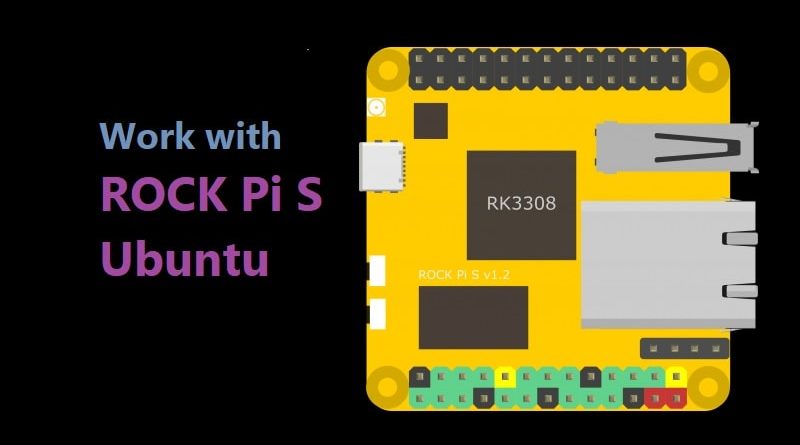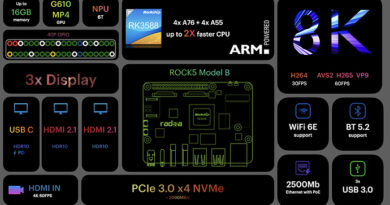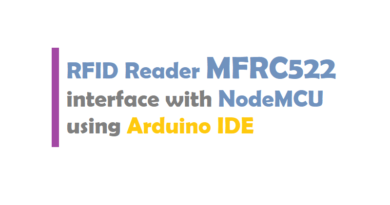ROCK Pi S Ubuntu | Work with ROCK Pi S Ubuntu
Recently ROCK Pi S Ubuntu Bionic system image is released. Rock Pi is best alternative of Raspberry Pi. Nowadays Rock Pi 4 is popular and used in embedded and IoT Development. In this we learn how to work with Rock Pi S Ubuntu. Rock Pi is a small board by Radxa. Size of this board is only 1.7 inch.
What is ROCK Pi S ?
S is for Small Square. ROCK Pi S is a Rockchip RK3308 based SBC(Single Board Computer) by Radxa. It equips a 64bits quad core processor, USB, ethernet, wireless connectivity and voice detection engine at the size of 1.7 inch, make it perfect for IoT and voice applications. ROCK Pi S comes in two ram sizes 256MB or 512MB DDR3, and uses uSD card for OS and storage. Optionally, ROCK Pi S can provide on board storage version with 1Gb/2Gb/4Gb/8Gb NAND flash.
You may like also: Rock Pi 4 Tutorials | Getting Started with Rock Pi 4
Work with ROCK Pi S Ubuntu
What is ROCK Pi S Ubuntu
ROCK Pi S Ubuntu is an easy to use system. While working with ROCK Pi S Ubuntu, you will find it do well on playing music, Internet, Bluetooth and so on.
Access from the Host PC/Laptop
Option 1: USB access(adb)
By default, the ROCK Pi S Linux image enables adbd services, which is a debug bridge from Android now ported on Linux. With one USB A to C cable you can power and access the board, very handy.
To use adb, you need to install adb tool on the PC/Laptop. Check instructions for Windows and Linux.
After you have adb installed successfully, run the following command on console to login the shell of ROCK Pi S:
adb shell
Check Using adb.
Option 2: Serial console
Check Serial Console
Option 3: SSH
SSH server is enabled on port 22 of ROCK Pi S default image.
Please use angryip to find your board IP address.
To access ROCK Pi S by SSH, try
ping rockpis.local ssh [email protected]
or if your router/network doesn’t support Local Domain, you need to check your network/router administrator page and look for the ROCK Pi S ip address.
ping ip-of-device ssh rock@ip-of-device
Note: You can also get the IP of ROCK Pi S from option 1 or option 2 if you can not access network administrator page.
Debian Default User Account
Non-root User:
User Name : rock Password : rock
Install and update necessary packages
Add Radxa APT, see Radxa APT.
Install packages;
$ sudo apt-get update $ sudo apt-get install -y rockchip-overlay $ sudo apt-get install -y linux-4.4-rockpis-latest rockpis-dtbo
Network Connection
There are two methods for network connection. One is Ethernet and the other is WIFI.
Ethernet Connection
You can use a network cable (one end connected to the external network port or route) to connect your ROCK Pi S to the network. The ROCK Pi S will automatically configure the network for your surfing on the Internet.
To test the Ethernet, we need to follow the steps:
- Switch to super user mode by command
$ sudo su
- Check whether the Ethernet is normal by command, ifconfig, which would show us a network card, eth0, and the Ethernet IP address. Also, use tool, ping, to connect to a normal domain.
$ ifconfig $ ping www.baidu.com
- If failed to connect to a normal domain. , try
$ sudo dhclient eth0
WIFI Connection
When there is not a network cable for your ROCK Pi S the WIFI connection is another good choice. ROCK Pi S supports 2.4G WIFI wireless network.
To test the WIFI performance, we need to follow the steps:
- Switch to super user mode
$ sudo su
- Open the WIFI
$ nmcli r wifi on
- Scan WIFI
$ nmcli dev wifi
- Connect to WIFI network
$ nmcli dev wifi connect "wifi_name" password "wifi_password"
- Test WIFI perpormance by tool iperf.
Bluetooth
Update necessary packages
$ sudo apt-get update $ sudp apt-get install -y rockchip-overlay $ sudo apt-get install -y linux-4.4-rockpis-latest # kernel version(>=4.4.143.27) $ sudo apt-get install -y rtl8723ds-firmware bluez
Check Bluetooth service
$ systemctl status bluetooth
Run Bluetooth service if the Bluetooth service is inactive.
$ systemctl start bluetooth
Check Bluetooth device
$ hciconfig
hci0: Type: Primary Bus: UART
BD Address: 22:22:AA:25:49:1E ACL MTU: 1021:8 SCO MTU: 255:12
UP RUNNING
RX bytes:4424 acl:0 sco:0 events:81 errors:0
TX bytes:3820 acl:0 sco:0 commands:52 errors:0
Example: Connect to Bluetooth Speaker.
Change to root mode.
$ sudo su
Install pulseaudio packages
# apt-get install -y pulseaudio-module-bluetooth pulseaudio
Run pulseaudio
# pulseaudio --start
Connect using bluetoothctl
# bluetoothctl [bluetooth]# default-agent [bluetooth]# power on [bluetooth]# scan on [bluetooth]# trust 77:EC:79:4F:6B:AC [bluetooth]# pair 77:EC:79:4F:6B:AC [bluetooth]# connect 77:EC:79:4F:6B:AC
Play songs and enjoy it.
Storage device
- uSD Card: /dev/mmcblk0
- SD Nand: /dev/mmcblk1
Boot device order
SD Nand -> uSD Card
Changelogs
2019.12.19
rockpis_ubuntu_bionic_minimal_arm64_191219_0410-gpt.img
- U-boot version: 2017.09-02370-g6d65a50f1e
- Kernel version: 4.4.143-34-rockchip-g3c9d2019dba7
- System partitions: boot and rootfs
- Default serial console: UART0
- Default non-root user: rock (password: rock)
- Hostname: rockpis
- Support adb by default.
- Support SSH by default.
- Resize root filesystem to fit available disk space for the first boot
- Automatically load Bluetooth firmware after system startup.
Get ROCK Pi S Ubuntu Bionic system image
Thanks for reading. If you like this post probably you might like my next ones, so please support me by subscribing my blog.
You may like also: Rock Pi Boards | Rock Pi 4 | Rock Pi X | Rock Pi N10




